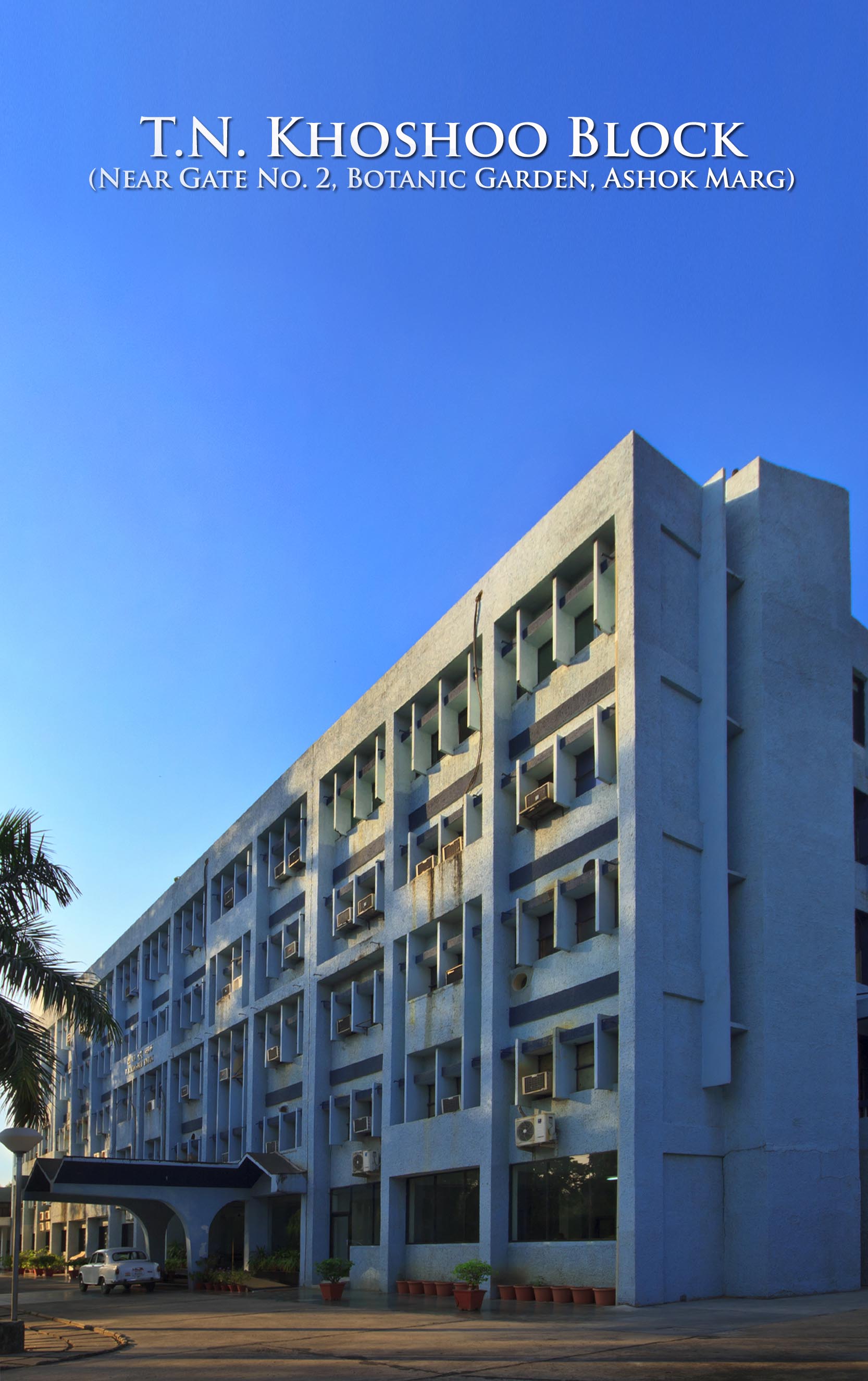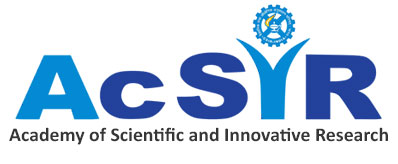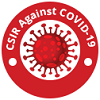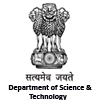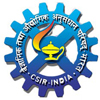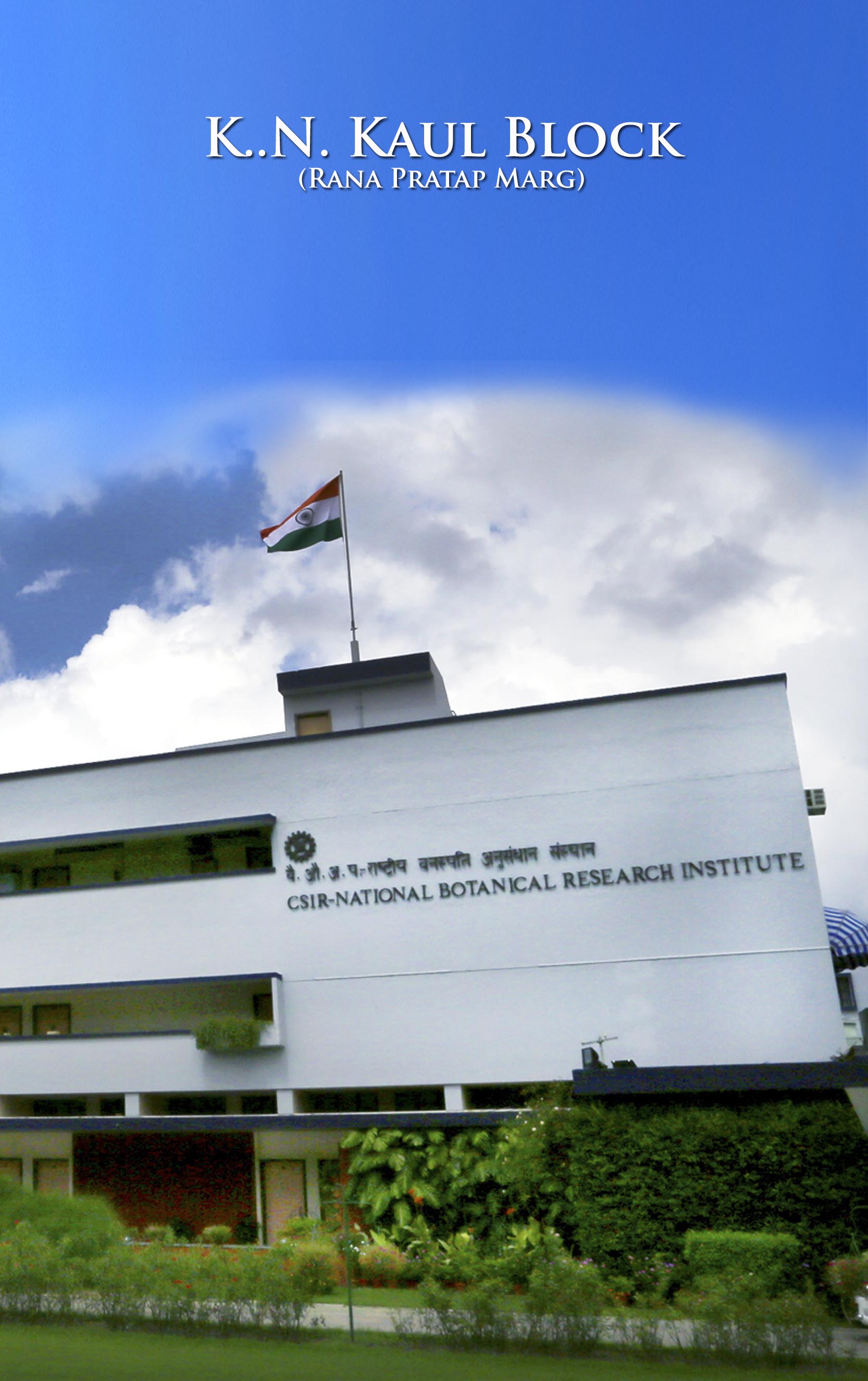
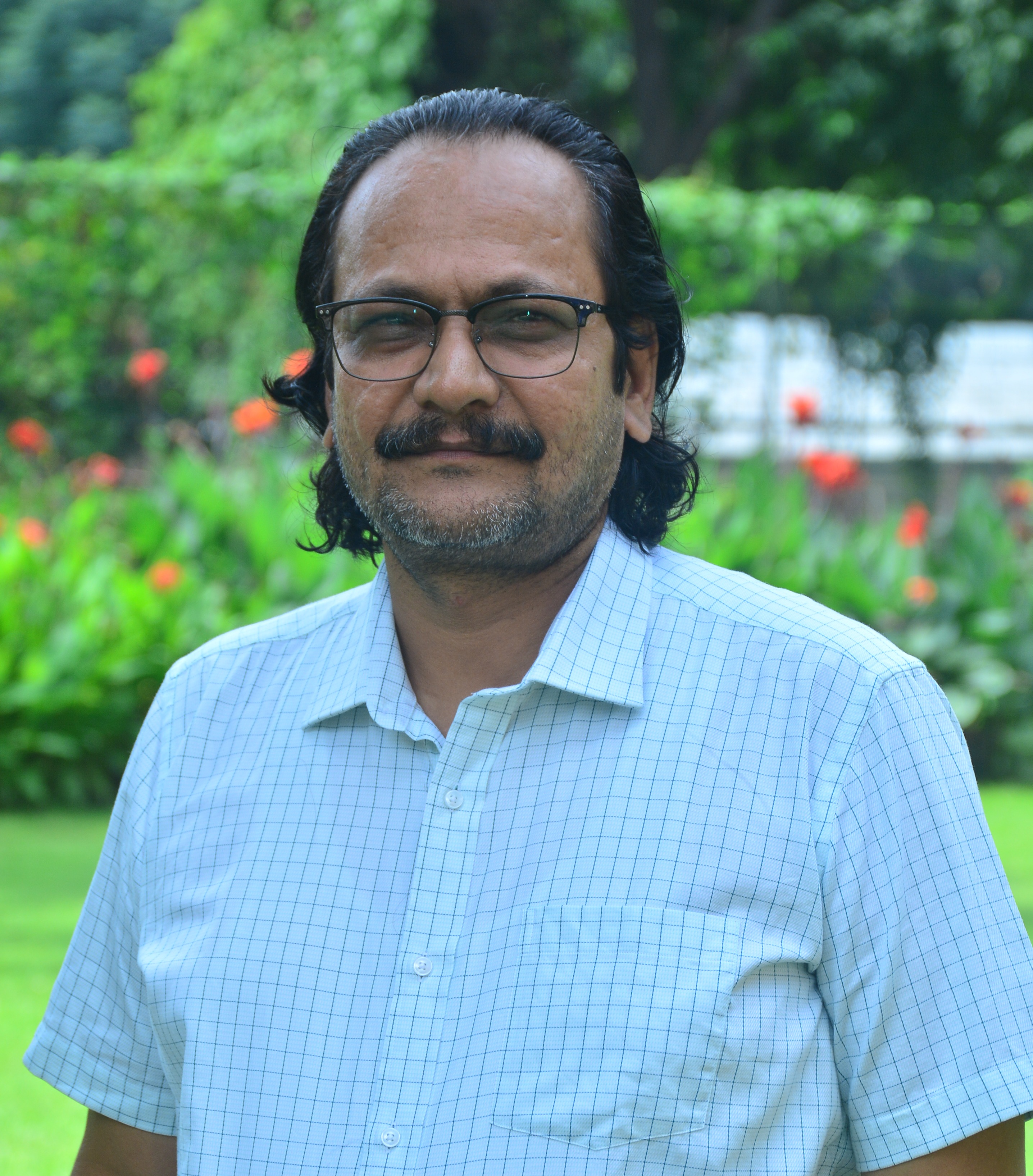
Dr. Vivek Pandey
Chief Scientist
Research Interests
I have more than 34 years of research experience in abiotic stress biology including metal and drought stress, air pollution and climate change. My group works on impact of climate change (e.g. elevated CO2, O3 and/or temperature) on plants at physiological, biochemical and molecular levels. We are also studying the response of commonly growing trees/ shrubs to urban air pollution (mainly O3 and particulates). We also undertake projects related to Environmental Impact Assessment from industries, particularly coal-fired power plants.
Dr. Vivek Pandey
Chief Scientist
Research Summary
We studied impact of elevated CO2 (free air CO2 enrichment) on wheat (Triticumaestivum L. varKundan) growth, yield and proteome. Elevated CO2 significantly impacted growth and yield of plants under high CO2. On the other hand, seed protein content was decreased while seed starch and soluble sugar contents were increased. Wheat leaf proteomics revealed more abundant proteins related to defense, photosynthesis, energy metabolism etc. Gluten proteins are the major component of wheat storage proteins. Our results showed that both high and low molecular weight glutenins were more in eCO2 wheat seeds while there was no change in gliadin evels. This might alter wheat dough strength. Concentration of grain Fe, Cu, Zn and Se were found to be decreased. Our study showed that altered wheat seed composition is cause for concern vis-a-vis nutrition and health and for industries which may have implications for agriculturally dominated country like India.
Tropospheric ozone (O3) is a phytotoxic pollutant causing substantial damage to agricultural production and food security. A chemical protectant, EDU [ethylenediurea; N-(2-2-oxo-1-imidazolidinyl) ethyl]-N0- phenyl urea can specifically prevent the O3 injury as well as decrease the growth and yield losses in the ambient field conditions. We have used EDU in several of our experiments using rice, wheat, mustard and linseed. In one such study, 11 cultivars of wheat (Triticumaestivum) were chosen to study the effect of ambient ozone (O3) concentration at two high-ozone experimental sites by using 300 ppm of Ethylenediurea (EDU) as a chemical protectant against O3. EDU-grown plants had higher grain yield, biomass, stomatal conductance and photosynthesis,less lipid peroxidation, changes in superoxide dismutase and catalase activities, changes in contentof oxidized and reduced glutathione compared to non-EDU plants, thus indicating the severity ofO3 induced productivity loss.. EDU responses were dependent on the cultivar, the developmental phase (vegetative, flowering and harvest) and the experimental site.
In another study, eighteen rice (Oryzasativa) cultivars were screened for ozone (O3) tolerance and for the most responsive parameters with ethylenediurea (EDU) treatments at two experimental sites experiencing high ambient O3 conditions. The most responsive parameters with EDU treatment in high O3 across all cultivars were superoxide dismutase (SOD) and catalase (CAT) activities, the contents of oxidised (GSSG) and reduced (GSH) glutathione and MDA, and shoot weight plant−1. These results indicated that the O3 scavenging activity of EDU is mediated through an antioxidant defence system rather than a direct effect on physiological parameters, such as photosynthesis and stomatal conductance.
Currently I am leading a DST sponsored project entitled “Adaptation strategies of rice varieties of Indo-Gangetic Plains to climate change”. In this project we are assessing impact of elevated CO2, O3 and temperature on rice varieties of IGP region under FACE condition. The idea is to identify rice varieties with contrasting responses to these abiotic stresses. We will identify SNP markers related to stress responsive traits for marker assisted breeding of climate resilient rice. We are also studying rice responses in relation to soil carbon dynamics and microbial diversity. The study would yield robust data about how rice physiological, genetic and yield parameters and associated microbial dynamics will respond to anticipated changes in the atmosphere which may help improve modelling and breeding efforts in the future.
Another ongoing project is on Bioaccumulation and bio-magnification study on flora and fauna of surrounding the ash filled South Balanda Mine Void at Talcher Thermal Power Station, Odisha. We are estimating bio-accumulation of trace elements in flora (tree leaves, vegetation, fruits, fodder, crop yields etc.) and fauna (cattle population, meat, scat etc) including the invertebrates and aquatic fauna.
Dr. Vivek Pandey
Chief Scientist
Publications
– Pandey AK, Majumder B, Keski-Saari S, Kontunen-Soppela S , Vivek Pandey and Oksanen E. 2019. High variation in resource allocation strategies among 11 Indian wheat (Triticumaestivum) cultivars growing in high ozone environment. Climate 7, 23; doi:10.3390/cli7020023.
– Mishra A, Singh SP, Mahfooz S, Shukla R, Mishra N, Pandey S, Dwivedi S, Vivek Pandey, Shirke PA, Nautiyal CS. 2019. External supplement of impulsive micromanager trichoderma helps in combating CO2 stress in rice grown under FACE. Plant MolBiol Reporter. https://doi.org/10.1007/s11105-018-1133-8.
– Singh A.K., Rai A, Kushwaha M, Chauhan P.S., Vivek Pandey, Singh N. 2019. Tree growth rate regulate the influence of elevated CO2 on soil biochemical responses under tropical condition. Journal of Environmental Management 231:1211-1221.
– Kannaujia R, Srivastava CM, Prasad V, Singh BN, Vivek Pandey. 2019. Phyllanthusemblica fruit extract stabilized biogenic silver nanoparticles as a growth promoter of wheat varieties by reducing ROS toxicity. Plant Physiol&Biochem 142: 460-471.
– Gupta SK, Sharma M, Majumder B, Maurya VK, Lohani M, Deeba F, Vivek Pandey. 2018. Impact of ethylene diurea (EDU) on growth, yield and proteome of two winter wheat varieties under high ambient ozone phytotoxicity. Chemosphere 196:161-173.
– Sharma M, Gupta SK, Majumder B, Maurya VK, Deeba F, Alam A, Pandey Vivek. 2018. Proteomics unravel the regulating role of salicylic acid in soybean under yield limiting drought stress. Plant PhysiolBiochem 130:529-541.
– Sharma M, Gupta SK, Majumder B, Maurya VK, Deeba F, Alam A, Pandey Vivek. 2017. Salicylic acid mediated growth, physiological and proteomic responses in two wheat varieties under drought stress. Journal of Proteomics. 163: 28-51.
– Pandey, V., Sharma, M., Deeba, F., Maurya, V.K., Gupta, S.K., Singh, S.P., Mishra, A. and Nautiyal, C.S. 2017. Impact of elevated CO2 on wheat growth and yield under Free Air CO2 Enrichment. American Journal of Climate Change, 6, 573-596
– Deeba F, Pandey AK and Pandey V (2016). Organ specific proteomic dissection of Selaginellabryopteris undergoing dehydration and rehydration. Front. Plant Sci. 7:425. doi:10.3389/fpls.2016.00425.
– Pandey AK, Majumder B, Keski-Saari S, Kontunen-Soppela S, Mishra A, Sahu N, Pandey V, Oksanen E. 2015. Searching for common responsive parameters for ozone tolerance in 18 rice cultivars in India: results from ethylenediurea studies. Science of the Total Environ. 532:230–238.
– Pandey AK, Majumder B, Keski-Saari S, Kontunen-Soppela S, Pandey Vivek, Oksanen E. 2014. Differences in responses of two mustard cultivars to ethylenediurea (EDU) at high ambient ozone concentrations in India. Agriculture, Ecosystems and Environment 196: 158–166.
– Oksanen E,Vivek Pandey, A. K. Pandey, S. Keski-Saari, S. Kontunen-Soppela, C. Sharma. 2013. Impacts of increasing ozone on Indian plants. Environ Poll177, 189-200.
– Pandey Vivek, Dixit V, & R Shyam. 2005. Antioxidative responses in relation to growth of mustard (Brassica juncea cv. PusaJaikisan) plants exposed to hexavalent chromium. Chemosphere 61: 40-47.
– Dixit V, Vivek Pandey & R Shyam. 2002. Chromium ions inactivate electron transport and enhance super oxide generation in vivo in pea (Pisumsativum L. cv. Azad) root mitochondria. Pl. Cell Environ.25:687-693.
– Dixit V, Vivek Pandey & R Shyam. 2001. Differential anti-oxidative responses to cadmium in roots and leaves of pea (Pisumsativum L. cv. Azad) J. Exp. Bot. 52 (358): 1101-1109.
Dr. Vivek Pandey
Chief Scientist
Patents
Dr. Vivek Pandey
Chief Scientist
Research Scholars
Ms. Prateeksha Singh, SRF
Mr. Mitul Mukeshkumar Kotecha, SRF
Mr. Ashutosh Pandey, Project Assistant
Ms. Rushna Jamal, Project Assistant
Dr. Vivek Pandey
Chief Scientist
Address
Plant Ecology & Climate Change Science Division
CSIR-National Botanical Research Institute, Rana Pratap Marg, Lucknow-226001
Phone no.: 0522-2297929
Email: v.pandey@nbri.res.in, vivekpandey64@yahoo.com
